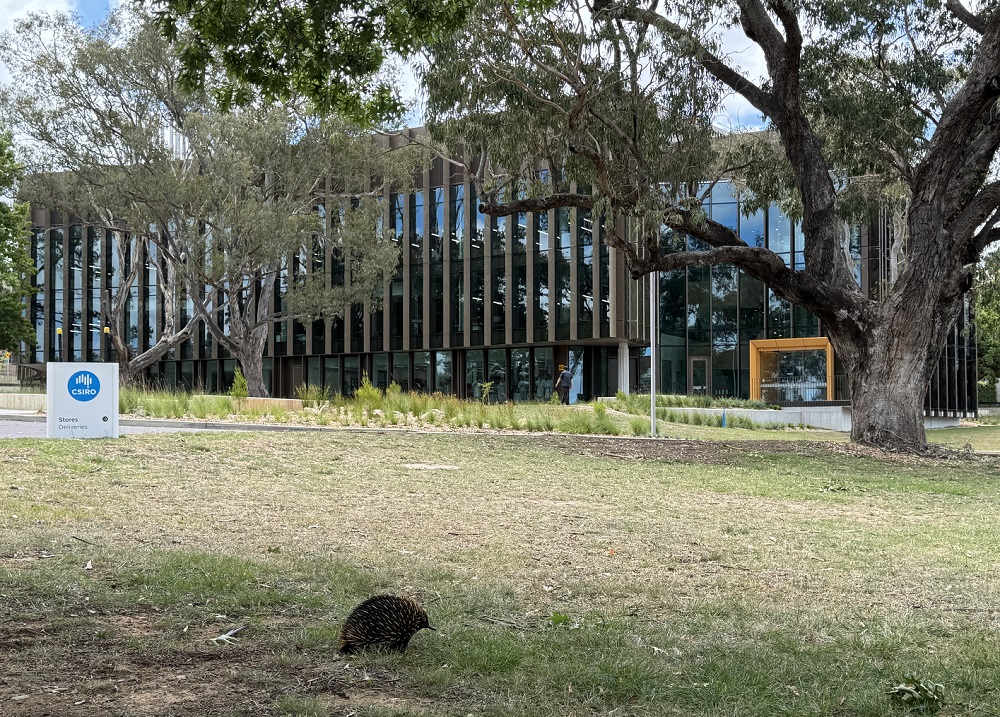The National Research Collections Australia is home to 15 million natural history specimens that are used by researchers, government and industry to describe, manage and benefit from Australia's rich biodiversity.
Our collections are located in Canberra, Hobart and Cairns.
Our new collections precinct in Canberra includes a new National Collections Building, which is jointly funded by CSIRO and the Department of Education through the National Collaborative Research Infrastructure Strategy (NCRIS).
A new collections precinct in Canberra
Our new collections precinct co-locates four collections:
- Australian National Herbarium
- Australian National Insect Collection
- Australian National Wildlife Collection
- Australian Tree Seed Centre.
The Australian National Herbarium and the Australian Tree Seed Centre were already located on the site of the new collections precinct. Their existing buildings have undergone minor upgrades.
The new National Collections Building accommodates the wildlife and insect collections, providing:
- modern storage facilities for our collections
- storage for ethanol-preserved specimens, including the herbarium’s spirit collection
- a new molecular laboratory hub with dedicated trace DNA processing facilities to support Australian museomics research
- dedicated digitisation facilities.
Building works commenced in autumn 2022. Staff are now working in the new building and the specimens are currently being relocated.
Accessing our collections during 2025
The Australian National Algae Culture Collection and Australian National Fish Collection in Hobart, Tasmania and the Australian Tropical Herbarium in Cairns, Queensland are not impacted.
There were minor disruptions to the operations of the Australian Tree Seed Centre during refurbishment. There continue to be minor impacts to loans, tours, students and visitors at the Australian National Herbarium.
We are moving the Australian National Insect Collection a few hundred metres from its current location. This involves significant disruptions to all activities as a result of relocating more than 13 million specimens and associated research equipment. Access for visitors, loans in/out and enquiries that require access to the collection will be interrupted until later in 2025.
We are moving the Australian National Wildlife Collection a distance of around 10 kilometres from its current location. Access to specimens for visitors and external researchers will be impacted during the relocation. We will not be able to grant requests for frozen tissue until staff have completed participating in the whole move, later in 2025.
Welcome!
Later this year we will hold an opening of our New Collections Building. We look forward to resuming research and loan operations and welcoming visitors.
The National Research Collections Australia is home to 15 million natural history specimens that are used by researchers, government and industry to describe, manage and benefit from Australia's rich biodiversity.
Our collections are located in Canberra, Hobart and Cairns.
Our new collections precinct in Canberra includes a new National Collections Building, which is jointly funded by CSIRO and the Department of Education through the National Collaborative Research Infrastructure Strategy (NCRIS).
A new collections precinct in Canberra
Our new collections precinct co-locates four collections:
- Australian National Herbarium
- Australian National Insect Collection
- Australian National Wildlife Collection
- Australian Tree Seed Centre.
The Australian National Herbarium and the Australian Tree Seed Centre were already located on the site of the new collections precinct. Their existing buildings have undergone minor upgrades.
The new National Collections Building accommodates the wildlife and insect collections, providing:
- modern storage facilities for our collections
- storage for ethanol-preserved specimens, including the herbarium’s spirit collection
- a new molecular laboratory hub with dedicated trace DNA processing facilities to support Australian museomics research
- dedicated digitisation facilities.
Building works commenced in autumn 2022. Staff are now working in the new building and the specimens are currently being relocated.
Accessing our collections during 2025
The Australian National Algae Culture Collection and Australian National Fish Collection in Hobart, Tasmania and the Australian Tropical Herbarium in Cairns, Queensland are not impacted.
There were minor disruptions to the operations of the Australian Tree Seed Centre during refurbishment. There continue to be minor impacts to loans, tours, students and visitors at the Australian National Herbarium.
We are moving the Australian National Insect Collection a few hundred metres from its current location. This involves significant disruptions to all activities as a result of relocating more than 13 million specimens and associated research equipment. Access for visitors, loans in/out and enquiries that require access to the collection will be interrupted until later in 2025.
We are moving the Australian National Wildlife Collection a distance of around 10 kilometres from its current location. Access to specimens for visitors and external researchers will be impacted during the relocation. We will not be able to grant requests for frozen tissue until staff have completed participating in the whole move, later in 2025.
Welcome!
Later this year we will hold an opening of our New Collections Building. We look forward to resuming research and loan operations and welcoming visitors.

